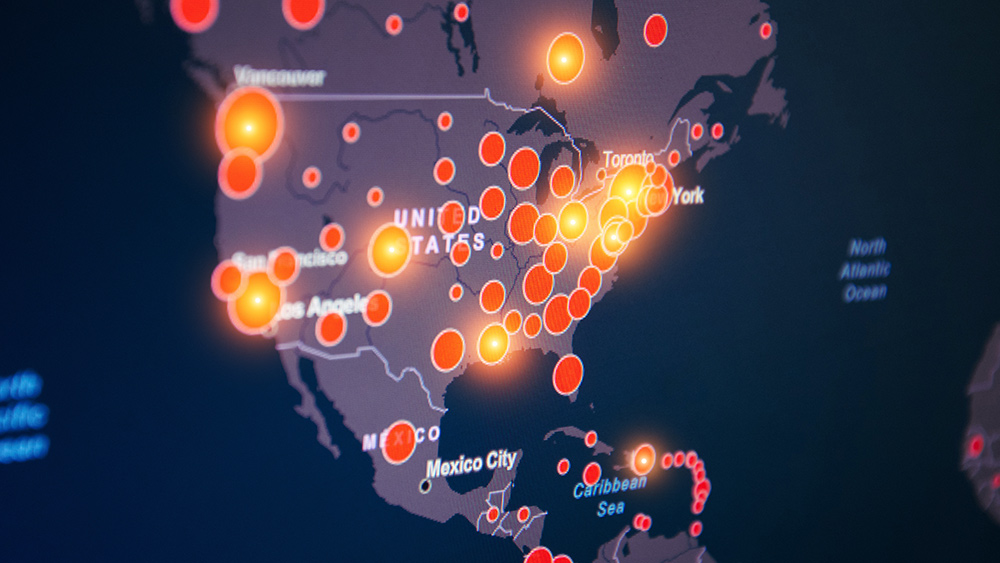Deaths from ANY cause surge by 50% in Europe from March to April… mortality numbers bring clarity to coronavirus debate
05/04/2020 / By Isabelle Z.

The death tolls from COVID-19 that have been widely reported for various countries around the world are upsetting on their own, but a new report shows that those numbers are actually just the tip of the iceberg.
An analysis carried out by the Financial Times shows that the death toll from the disease overall could be as much as 60 percent greater than what official counts indicate. They reached this number by taking a look at the numbers of deaths from any cause in March and April of 2020 in various locations around the world and comparing it to the average for the same time frame in the years from 2015 to 2019. The total they arrived at, 122,000, represents a 50 percent jump in overall mortality in relation to the locations’ historical average.
When you look at individual places, you can see the same phenomenon at work. New York State, for example, typically sees 441 deaths each day on average in non-pandemic times, according to data from Indexmundi.com. During the coronavirus surge, however, they experienced a 299 percent rise in total deaths from all causes. It could be argued that not all of these are directly caused by coronavirus; in some places, people aren’t as quick to seek medical help for non-virus reasons as they normally would be because they’re worried about being exposed. At the same time, however, lockdowns mean there are a lot fewer road and work accidents killing people these days.
It simply cannot be a coincidence that so many more people than usual are dying at the same time that the virus is surging in different areas.
When you subtract the number of officially counted coronavirus deaths in various places from these excess deaths, you’ll see that there are thousands of people who most likely died from the virus but were never tested for it. After all, it doesn’t make any sense to use the hard-to-get tests on people who are already dead. However, this does show us how far off official counts could be.
Huge jumps in overall deaths seen throughout Europe
The report also looked at individual countries, and it paints a grim picture of the situation in Europe. France’s overall death rate climbed by 34 percent, while that of Italy rose by 90 percent and Spain by 51 percent. In Belgium, overall deaths were up by 60 percent, while a surge of 42 percent was seen in the Netherlands. When you look at specific places, it’s even worse. The surge in total mortality in Bergamo province was 463 percent, while that seen in Madrid, Spain, was 161 percent. Ile-de-France, France, meanwhile, saw a surge of 122 percent.
There’s no question that coronavirus is behind these deaths. There really is nothing else that could be suddenly causing hundreds of thousands of people to die around the world at the same time. You may recall that when all this started, a lot of people argued that those dying from the virus were elderly or sick people who would have died anyway, but it’s clear from these numbers that is absolutely not the case.
In fact, the Financial Times went on to calculate that the global death toll of coronavirus should actually be above 300,000; contrast this with the current official count, which is closer to 200,000. These are statistics that could save lives if they were used to make decisions about ending lockdowns. With a 50 percent surge in deaths around the world, is it really time to start getting back to life as normal?
Sources for this article include:
Tagged Under: coronavirus, covid-19, death toll, deaths, Europe, excess mortality, fatalities, infections, outbreak, pandemic, research, statistics, virus
RECENT NEWS & ARTICLES
COPYRIGHT © 2017 COLLAPSE.NEWS
All content posted on this site is protected under Free Speech. Collapse.news is not responsible for content written by contributing authors. The information on this site is provided for educational and entertainment purposes only. It is not intended as a substitute for professional advice of any kind. Collapse.news assumes no responsibility for the use or misuse of this material. All trademarks, registered trademarks and service marks mentioned on this site are the property of their respective owners.



















